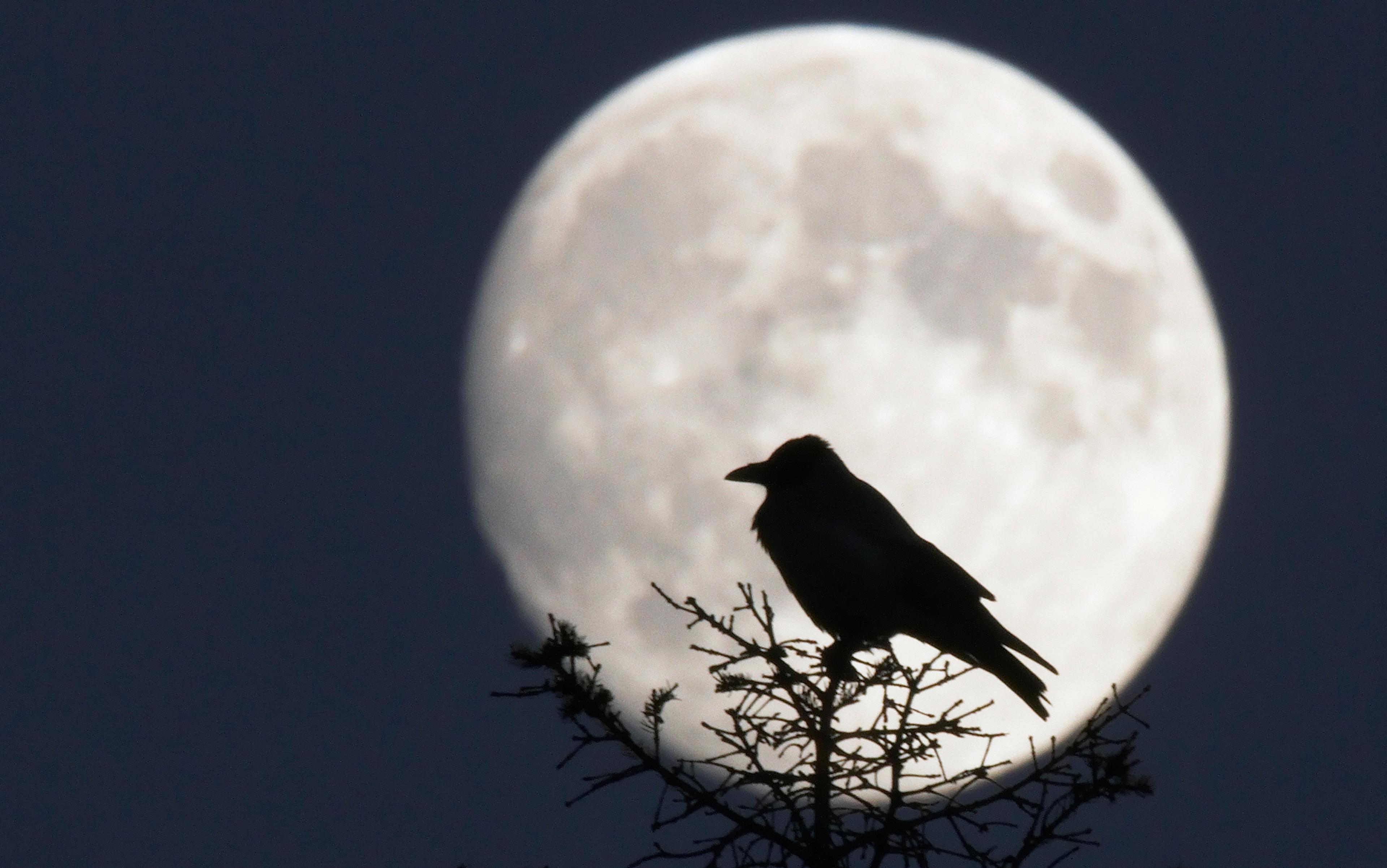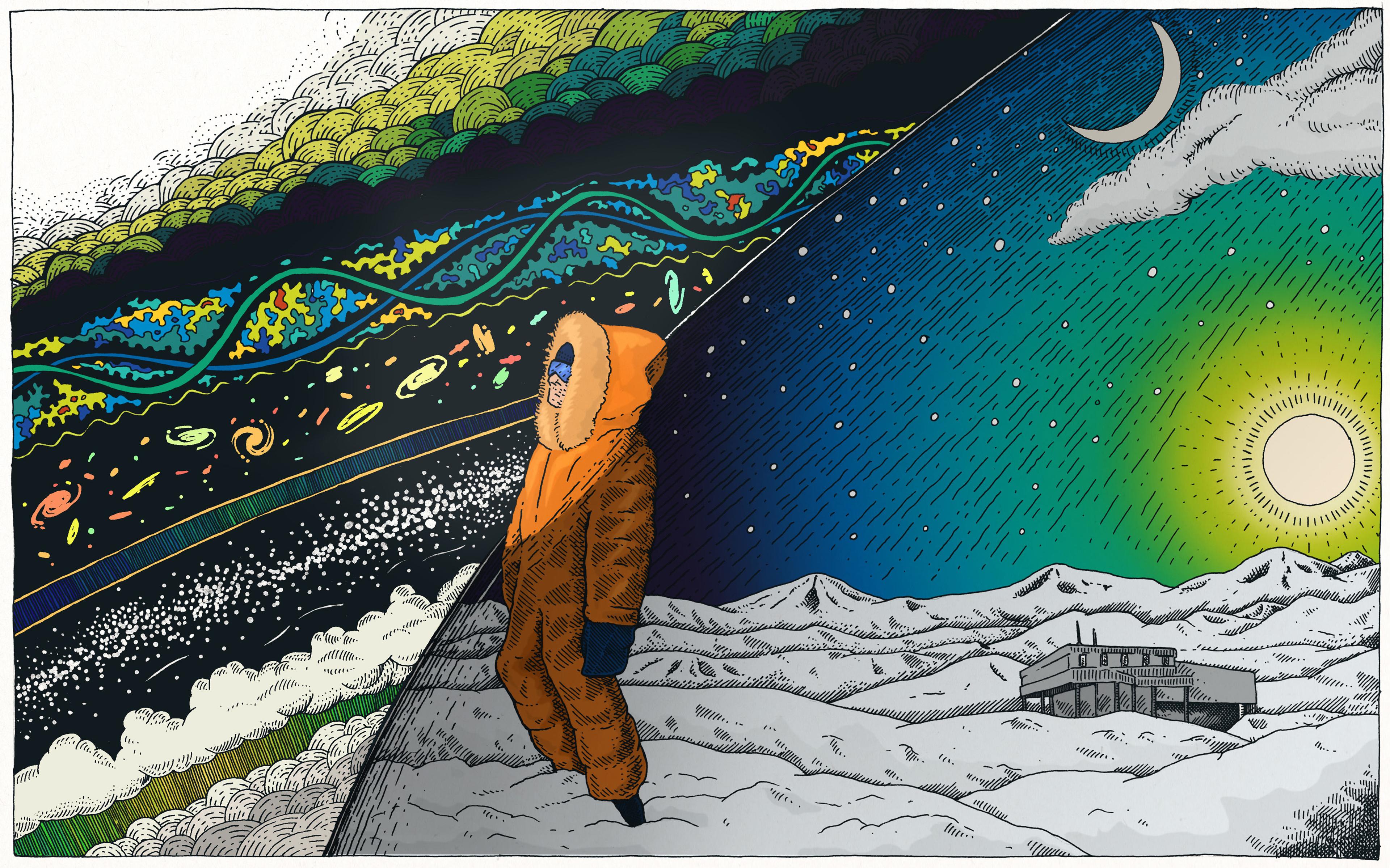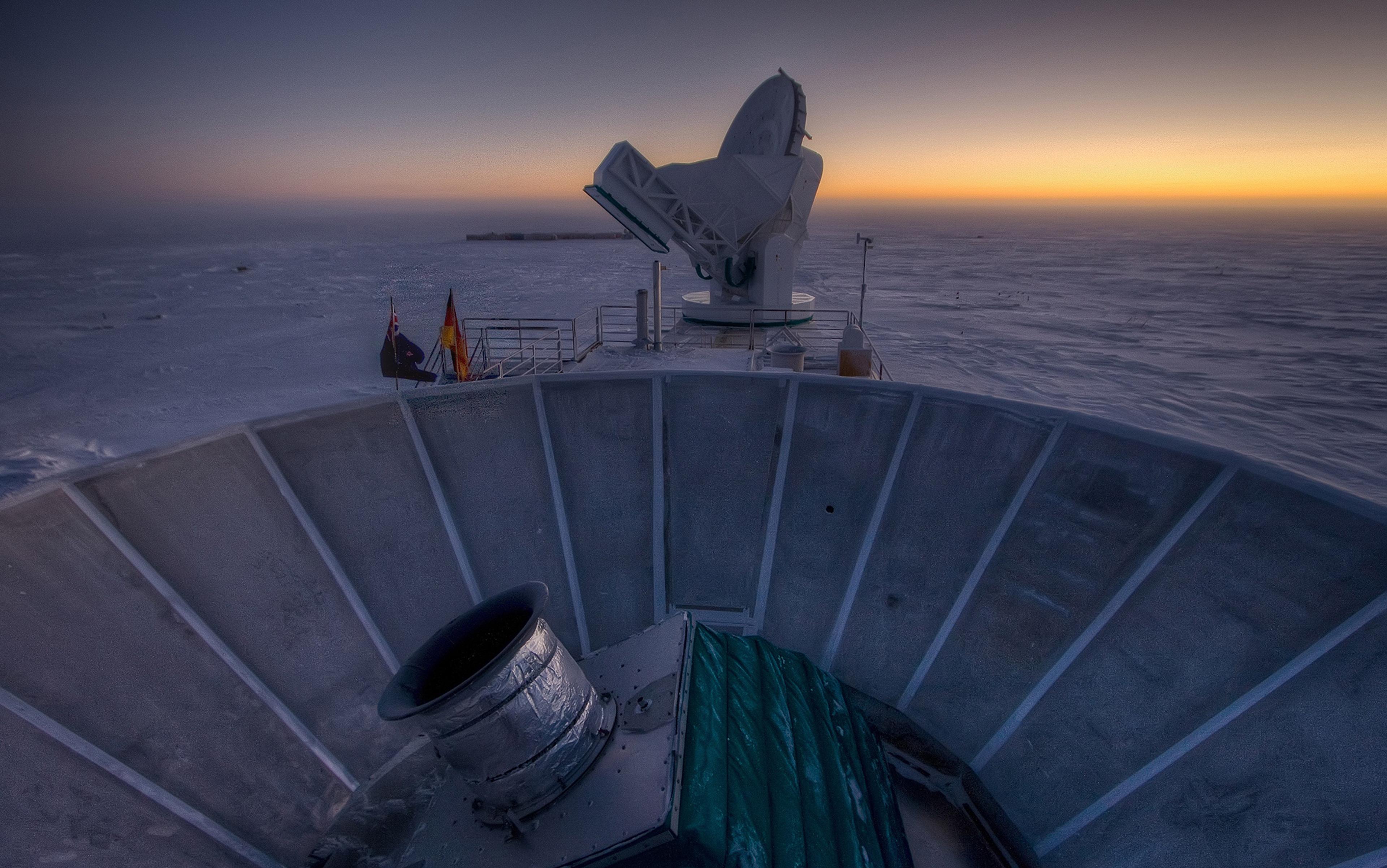Looking about me upon the wide waste of liquid ebony on which we were thus borne … I now began to watch, with a strange interest, the numerous things that floated in our company. I must have been delirious – for I even sought amusement in speculating upon the relative velocities of their several descents toward the foam below.
– From ‘A Descent into the Maelström’ (1841) by Edgar Allan Poe
Nature’s power enthralled the American writer Edgar Allan Poe, and galvanised some of his most memorable works. He was particularly captivated by the natural world’s ghastly capacity for destruction. In the short story ‘A Descent into the Maelström’, for instance, a sea voyage turns into sheer mayhem when a fierce vortex hurls the vessel toward its briny doom, shattering it into splinters. As if he were a journalist reporting a maritime calamity, Poe describes each stage of the devastation in riveting detail. His amateur interest in science lends his tales a measure of credibility that makes them all the more horrific.
Despite his relatively brief life, from 1809 to 1849, Poe applied his style to an astounding range of genres, from supernatural horror to detective stories. Even among that diversity, though, one piece stands out. In his final major work, Eureka – A Prose Poem (1848), he took his fascination with nature beyond the human world and crafted a chronicle of the Universe itself. The unique subject matter required an inversion of his usual approach. Instead of imagining a breaking down of regularity into shards, as in many of his famous short stories, Poe envisioned a systematic building up of order from a unitary beginning – a genesis rather than an apocalypse. Moreover, he offered his account as an attempt at realistic truth rather than mere fiction. ‘My general proposition … is this,’ he wrote. ‘In the Original Unity of the First Thing lies the Secondary Cause of All Things, with the Germ of their Inevitable Annihilation.’
Readers who first encounter Eureka are often surprised by its resemblance to the Big Bang model of cosmology, pioneered by the Belgian physicist and cleric Georges Lemaître in the 1920s, and later developed by the Russian-born cosmologist George Gamow and others. In the Big Bang narrative, the Universe started as a kind of dense, unitary ‘primeval atom’ (Lemaître’s term) that diversified as it expanded. The narrative of Eureka is similar enough that, taking it out of context, Poe seems uncannily prescient, almost a prophet of modern cosmology. Even though he had no access to the later theoretical insights and experimental evidence upon which the Big Bang is based, one might trace a narrative thread connecting Eureka’s ethereal speculations with the more solid scientific theory.
Poe identified a vital cosmos, pulsing with change, as dynamic as volcanic eruptions, earthquakes, and indeed maelströms. The Universe, painted with Poe’s vivid colours, became not just a backdrop to nature’s theatrics but a dramatis persona in its own right, much like the seven chambers in another of Poe’s stories, ‘The Masque of the Red Death’ (1842), or the turbulent sea in ‘A Descent’. In bringing the cosmos to life, Poe mirrored the embrace of natural transformation in many of the writings of the Transcendentalists around this time, such as Ralph Waldo Emerson in his lecture ‘The Method of Nature’ (1841), which advised: ‘If anything could stand still, it would be crushed and dissipated by the torrent it resisted.’ In a similar vein, Walt Whitman’s poem ‘A Song of the Open Road’ (1856) speaks of ‘wild seas… where winds blow, waves dash’.
Science today has embraced a dynamic Universe that alters from aeon to aeon (or even from second to second), but in the mid-19th century that view was rather radical. By then, Isaac Newton’s mechanistic laws of motion were well-established. At face value, they seemed to suggest a timeless Universe driven by deterministic rules to persist indefinitely. Running those laws backward into the past implied that the clockwork Universe would have always ticked, eliminating the need for Genesis. Eschewing Biblical teachings of a divine creation completely had proven too bold a step for Newton to take, however.
Lacking an obvious starting point, Newton had felt the need to insert one deus ex machina. In a letter to the English theologian Thomas Burnet, Newton envisioned how the early Universe was constructed:
One may suppose that all the planets about our sun were created together… That they all, and the sun too, had, at first, one common chaos. That this chaos, by the spirit of God moving upon it, became separated into several parcels, each parcel for a planet. That at the same time the matter of the sun also separated from the rest, and upon the separation began to shine before it was formed into that compact and well-defined body we now see it.
Newton had little reason to doubt the Biblical timeline that Earth and the cosmos were thousands of years old. In his day, fossil evidence for a distant past was just starting to be examined, and geological dating and astronomical observation had not yet revealed the true multi-billion-year timeline. The Irish archbishop James Ussher’s infamous 1654 proclamation that the Universe began on 22 October 4004 BCE was emblematic of the widespread misconceptions about a young Earth.
Although Poe was well aware of Newton’s contributions – which he mentioned, for example, in his magazine piece ‘Mellonta Tauta’ (1849) – it was the works of the German naturalist Alexander von Humboldt that sparked his imagination. Eureka begins with a dedication to Humboldt, and later lauds his attempts to describe the Universe:
The nearest approach to [a survey of the Universe] is made in the ‘Cosmos’ of Alexander von Humboldt. He presents the subject, however, not in its individuality but in its generality. His theme, in its last result, is the law of each portion of the merely physical Universe, as this law is related to the laws of every other portion of this merely physical Universe.
Born in Berlin in 1769, Humboldt was fascinated as a young man by botany, geology and other aspects of the natural world. He decided to sail to South America and engage in a systematic study of Earth’s dynamos, from the lofty volcanic peaks of the Andes to the dense rainforest of the Orinoco river basin. Through his research, he drew connections between the changing geological features of Earth and the astounding variety of life within it. Coupled with increasing evidence that Earth’s strata are a compendium of vastly different geological epochs, Humboldt’s expeditions revealed a world in flux, far older than human records and Biblical estimates. In other words, it added to the findings that represented the fall of the timeline of Ussher (pardon the pun).
In his widely read treatise Kosmos, published as a series of volumes from the 1840s to the 1860s, Humboldt offered a comprehensive guide to the natural world, from the minute to the astronomical, which showed how it progressed over time. That masterful collection lent science an unprecedented unity, and directly inspired Eureka.
If Earth went through stages of development, leading over the aeons to greater diversity, Poe considered, perhaps the Universe did as well. Much as Humboldt stood on mountaintops speculating about Earth’s changing topography, Poe in Eureka imagines observing the rest of the Universe and pondering its growth over time. Lacking the option of embarking on a literal cosmic voyage, Poe’s expedition takes place entirely within his own imagination. Audaciously, he compares his intuitive methods with those of Newton and the German astronomer Johannes Kepler.
Poe mentions Kepler and Newton a number of times in Eureka. Although he correctly attributes the laws of planetary motion, including elliptical orbits, to Kepler, he falsely maligns the nature of Kepler’s reasoning. ‘These vital laws Kepler guessed,’ Poe writes. ‘That it is to say, he imagined them.’ Poe apparently wasn’t familiar with Kepler’s careful study of the data collected by the Danish astronomer Tycho Brahe. Rather he seems to have confused Kepler’s earlier numerological speculations about the planets with his more systematic later work, which was empirical rather than speculative.
As to Newton, Poe praises him as the scientist clever enough to mould Kepler’s laws into a principle of universal gravitation, connecting all bodies in space through their mutual attraction. Yet he asserts that Newton didn’t follow through on the boldest implications of his premise. Newtonian gravitation, Poe asserts, must eventually pull all objects together into a unified whole, like a whirlpool drawing debris to a centre (drawing on one of Poe’s favourite images). That scenario implies a dynamic Universe, rather than an eternal, clockwork one. ‘The great mind of Newton, while boldly grasping the Law itself, shrank from the principle of the Law,’ Poe writes.
Imagining the uniting effects of Newtonian gravitation creating a kind of ‘primordial atom’ and that body becoming unstable, Poe offers the premise that the immeasurably vast stellar canopy began at some defined time in the past as a cosmic embryo that then evolved throughout the ages into its current form. Recognising the difficulty of the concept of infinity, Poe asks the reader simply to accept that the extent of space and the number of stars within it could be limitless. Nevertheless, all things must have an origin; however immense the Universe, it must have started from something created at some point in the past. Poe refers to the embryonic Universe as ‘the Particle’, and describes it in loving detail:
The assumption of absolute Unity in the primordial Particle includes that of infinite divisibility. Let us conceive the Particle, then, to be only not totally exhausted by diffusion into Space. From the one Particle, as a centre, let us suppose to be irradiated spherically – in all directions – to immeasurable but still definite distances in the previously vacant space – a certain inexpressibly great yet limited number of unimaginably yet not infinitely minute atoms.
Poe’s logic in proposing a kind of expansion is that the Universe must have been created in one place. Since it is now incredibly vast, the Universe must have grown enormously. He imagines the growth taking place only within space, however. In no manner does he suggest that space itself has expanded. Contrast Poe’s scheme with Lemaître’s expanding Universe theory. (Although the idea of the Big Bang is commonly attributed to Gamow or, erroneously, to Edwin Hubble, Lemaître’s work has precedence in several articles he published beginning in 1927.) Lemaître imagined an extraordinarily dense ‘primeval atom’, encompassing the entirety of matter, which greatly expanded over time to form the present-day cosmos. Although the primeval atom idea is superficially similar to Poe’s Particle, the impetus for the spreading of matter in Lemaître’s cosmology is the growth of space itself.
Poe saw the Universe as a central hub surrounded by a seemingly endless sea of scattered stars and gaseous nebula
Lemaître’s method was also quite different. He drew his conclusion from mathematical solutions of Albert Einstein’s equations of general relativity (unknown to Poe, of course) in which the scale factor – a kind of ‘tape measure’ of size – of space burgeons over time. Einstein was resistant, at first, to Lemaître’s idea, but he and others came to recognise its importance after Hubble’s 1929 discovery of the recession of galaxies away from the Milky Way at velocities proportional to their distances. Hubble’s work, based on observations by American astronomers Henrietta Swan Leavitt, Vesto Slipher and others, were a good match for Lemaître’s conjecture that expanding space would propel distant galaxies away from us, and from each other as well.
That brings us to another crucial difference between Eureka and modern cosmology: the existence of other galaxies. Based on the knowledge of his times, Poe saw the Universe as a central hub – the visible bulge and spiral of the Milky Way – surrounded by a seemingly endless sea of scattered stars and gaseous nebula. Not until the 1920s did astronomers come to understand that many of the ‘nebula’, such as the bright one in Andromeda, were independent galaxies in their own right.
Once we realise that Poe was talking about just our own galaxy rather than the entire Universe, the notion of materials emanating from a physical centre in space makes more sense. After all, the Milky Way clearly has a centre. By that standard, Poe’s cosmic intuition connected better than one might first suppose with the astronomical picture accepted at the time.
One of the great triumphs of Eureka, recognised much later by the astronomer Edward Harrison of the University of Massachusetts, was Poe’s clever solution to a perplexing scientific riddle known as Olbers’s paradox. In the 1820s, the German astronomer Heinrich Wilhelm Olbers asked the simple-sounding question: ‘Why is the sky dark at night?’ He pointed out that if the Universe were an endless sea of stars, if you trace a line toward any angle of the sky, eventually it would reach one of them. Presuming that the star had been shining indefinitely, its rays would have reached us by now. Therefore, that smidgeon of the sky would be bright, not dark. Applying that logic to any direction implies that every spot should be bright, and the nocturnal sky should be lit up in all directions, as if by the Sun. Why, then, is it mostly dark each night, with speckled exceptions?
In Eureka, Poe expresses Olbers’s paradox succinctly: ‘Were the succession of stars endless, then the background of the sky would present us a uniform luminosity, like that displayed by the Galaxy – since there could be absolutely no point, in all that background, at which would not exist a star.’ One part of the solution, as Poe shows, is that the speed of light must be finite in all locations. For Earth, that assumption wasn’t much of a stretch, as light’s speed was well-known. Through logical inference, Poe extrapolated that result to the rest of the Universe, decades before the Scottish physicist James Clerk Maxwell showed how melding electricity and magnetism into a unified theory of electromagnetism predicts a constant speed of light in all empty space.
Another of Poe’s premises, in his clever answer to Olbers’s paradox, is that the cosmos harbours vast regions of empty space. Hindered both by finite speeds and these enormous gaps, starlight takes countless years to reach us. We see stars not as they are today, but the way they appeared many years ago, like paging through dusty photo albums of the galaxy in its younger days. The final, most important piece of Poe’s solution is that there must be a time in the distant past before any stars were shining. In other words, the physical Universe must be finite in age. That premise emerges naturally from Eureka’s chronology of the birth and development of the Universe.
While Humboldt spoke in Kosmos about the origin and development of elements of the Universe, he didn’t speculate about the creation of the cosmos as a whole. Other accounts of the Universe, such as Newton’s, placed the finiteness of the physical Universe within the domain of theology, accepting the essence of the Biblical Genesis. Uniquely, in Eureka, Poe attempts to describe a Universe of finite age that originates through dynamic principles, similar to how one might date and delineate the development of the Earth and its geological features.
Put together the notions of a finite speed of light, large gaps in space, and a finite age of stars, and one finds in Eureka an elegant solution to Olbers’s paradox. The dark parts of the sky are those directions in which the youth of the Universe has not allowed stars to form – or, if they are there, the vastness of the Universe has not yet permitted their light to reach us. There simply has not been enough time.
There is no question that Poe, had he lived another 100 years, would have sided with the Big Bang camp
Roughly a century after the publication of Eureka, a debate raged between supporters of a finite expanding Universe (including Gamow) and an alternative known as the Steady State cosmology. It was the English astronomer Fred Hoyle, one of the leaders of the latter camp, who derisively dubbed the former explanation the ‘Big Bang’ – the name that stuck. Steady State theorists argued for an eternal cosmos in which matter was slowly and continuously created in a way that would patch the gaps between receding galaxies. On average, they argued, the Universe looks pretty much the same over time. Their thesis was an attempt to generalise the more widely accepted cosmological principle that the Universe, on its largest scale, appears overall the same everywhere in space. Unlike the Milky Way, the Universe itself has no centre. Extending that idea of homogeneity in space to uniformity in time, the Steady State theorists advocated an eternal, essentially changeless cosmos.
One problem with the Steady State view is that the infinite age of the Universe leads right back to the bright-night dilemma described by Olbers and addressed by Poe. There is no question that Poe, had he lived another 100 years, would have sided with the Big Bang camp.
In a series of radio measurements taken with a horn antenna in 1964 and 1965, the radio astronomers Arno Penzias and Robert Wilson at Bell Labs in New Jersey discovered the telltale hiss of the relic radiation leftover from the Big Bang. More than any other observation, Penzias and Wilson’s result led the vast majority of the scientific community to embrace the Big Bang concept of a finite Universe. Only a few renegade astronomers remained unconvinced, and tried to tweak the Steady State model to fit the new data. Since then, the COBE, WMAP and Planck satellites have mapped out the cosmic radiation background in increasingly precise detail, offering insight into how the expansion of the Universe transpired.
Cosmology has made enormous strides in the past century, starting with Einstein’s 1915 development of the general theory of relativity, and continuing with innovative solutions of that theory and detailed observations to support them. No one could honestly say that Eureka played a direct role in these scientific developments. The poem was not widely read at the time of its publication, and it was largely forgotten for decades. Nevertheless, Eureka offers a snapshot of the thinking of the age about how the world and the Universe developed. In other ways, though, it also stands significantly apart from both the science and the literature of Poe’s contemporaries.
The blend of Transcendentalist philosophy, post-Newtonian outlook, and natural intuition in Eureka was unique. Only Poe had the brilliance and skill to transform the thinking of Humboldt and others into a beautifully rendered chronology of the cosmos. In that sense, he was truly prescient. His resolution of Olbers’s paradox, in particular, was insightful and far ahead of its time. All by itself, Poe’s wonderfully succinct explanation of why the nighttime sky is as black as a raven’s wings is worth the price of admission.






